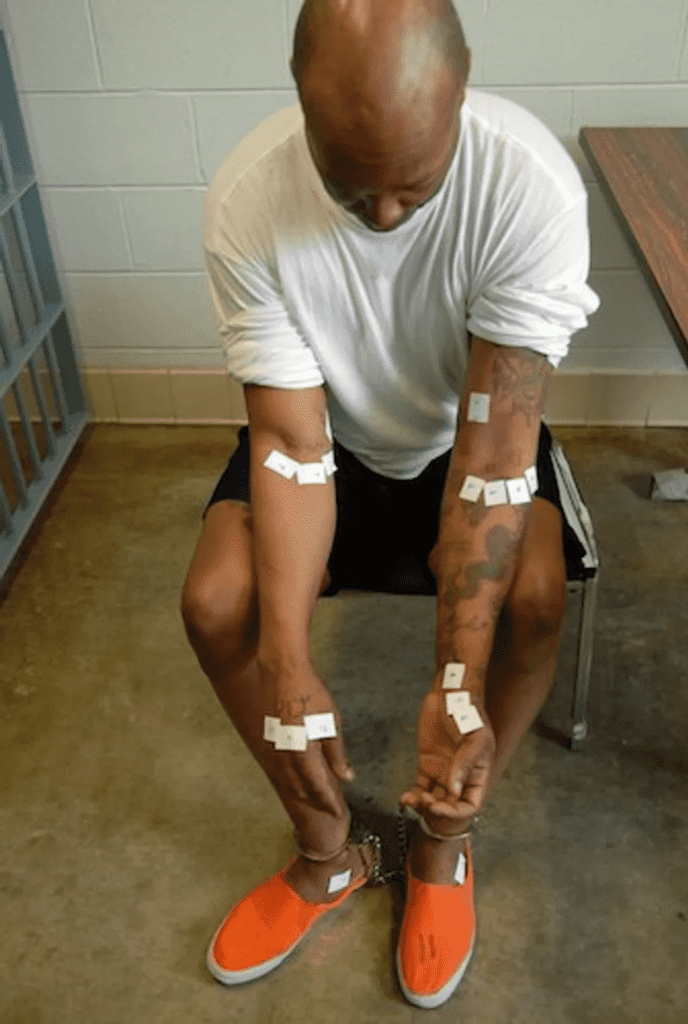For most people, a doctor not being able to find a vein is a major annoyance. You’re getting blood drawn for a test or having an IV inserted, and the nurse or doctor keeps poking and prodding you until they finally find a vein. For death row inmate Romell Broom, not being able to find a vein ended up buying him 11 more years of life.
September 15th, 2009 was supposed to be Broom’s last day on Earth. After receiving the death sentence for the 1984 murder of 14-year-old Tryna Middleton, Broom had spent decades on death row. His execution was scheduled for that fateful September day, and with no appeals left, it seemed like all options had run out. But clearly, fate had other plans.

As Broom sat in the chair, waiting for the executioners to establish an IV line into his arm, the time began to tick by. Prison personnel spent two hours trying to find a suitable vein, inserting the IV into 18 different spots on his arms and legs. The experience was no doubt incredibly unpleasant, with one attempt striking bone. But in Brooms’ case, the failure to find a vein led Ohio Governor Ted Strickland to issue a one-week reprieve, sending him back to his cell to live another day.

According to Robert Dunham, executive director of the Death Penalty Information Center, Mr. Broom’s case is one of the most botched executions in American history. “This case, more than any other, demonstrates the dangers in attempting to carry out these procedures,” said Dunham. “Lethal injection has the appearance of a medical procedure, but it is carried out by non-medical personnel.”
The state wanted to move forward immediately and attempt a second execution, but Broom challenged their authority in court. His lawyers argued that the first execution attempt was cruel and unusual punishment, and that a second attempt would violate the Double Jeopardy Clause in the Constitution.
Broom’s execution was delayed until the judiciary could rule on the matter, allowing him to stay alive for years past his initial execution date. As the case worked its way up the court system, judges ruled against him again and again. The Ohio Supreme Court ruled 4-3 against him on March 16th, 2016, allowing the state to authorize a second execution. An appeal to the US Supreme Court was denied, and a second execution was scheduled for June 17, 2020.
And then COVID hit. Supply chain issues disrupted everything, forcing Governor Mike DeWine to issue a reprieve on April 14th, 2020 due to the unavailability of execution drugs. His execution was rescheduled once more, this time for March 16th, 2022.
But alas, Broom’s luck had finally run out. As COVID was spreading through the prison system, infecting prisoners en masse, Broom became deathly ill with the disease. He ended up dying from complications of the disease on December 28th, 2020. He was 64 years old.
Death row survivor Romell Broom survived 18 lethal injection attempts as executioners were unable to find a suitable vein.
— non aesthetic things (@PicturesFoIder) January 29, 2024
He later died in prison from Covid-19. pic.twitter.com/0czMYKLo5V
It’s an incredible irony that Broom had spent years evading the state’s constant attempts at ending his life, only to die from something completely unrelated. But for the family of Tryna Middleton, it was justice delayed, but justice nonetheless.






